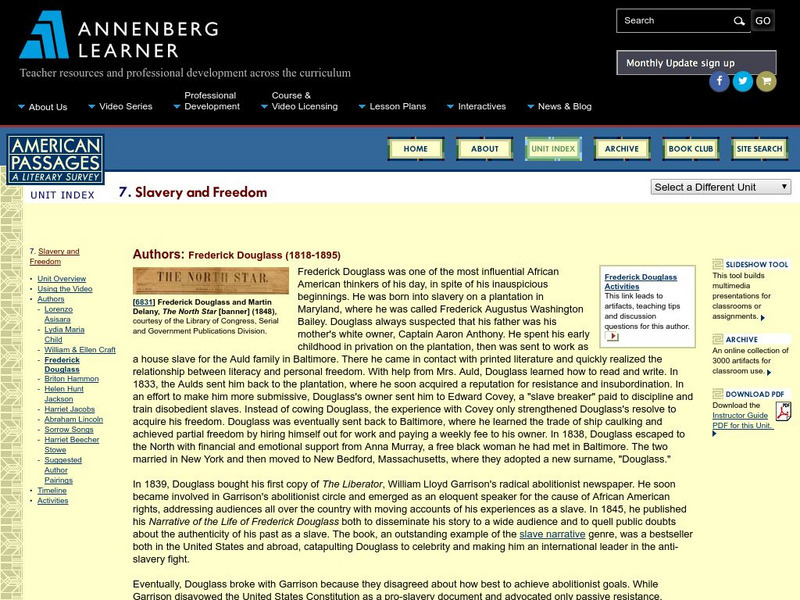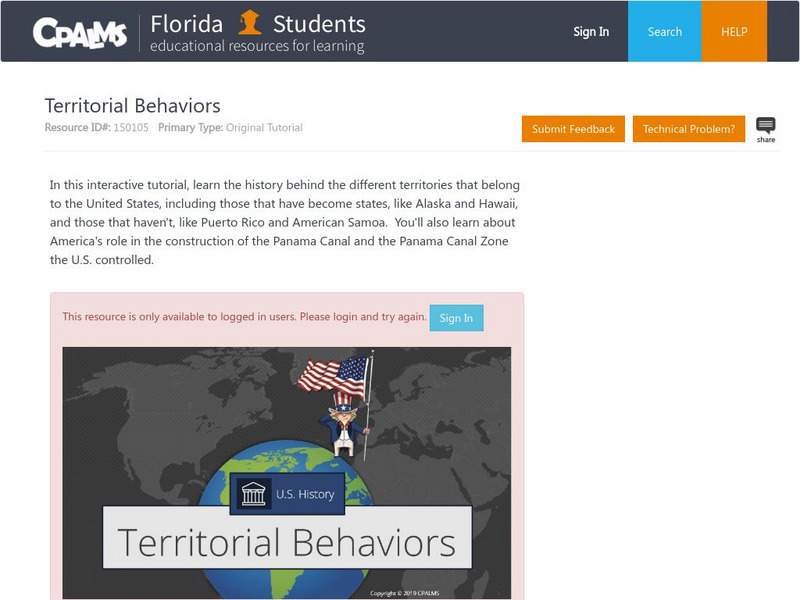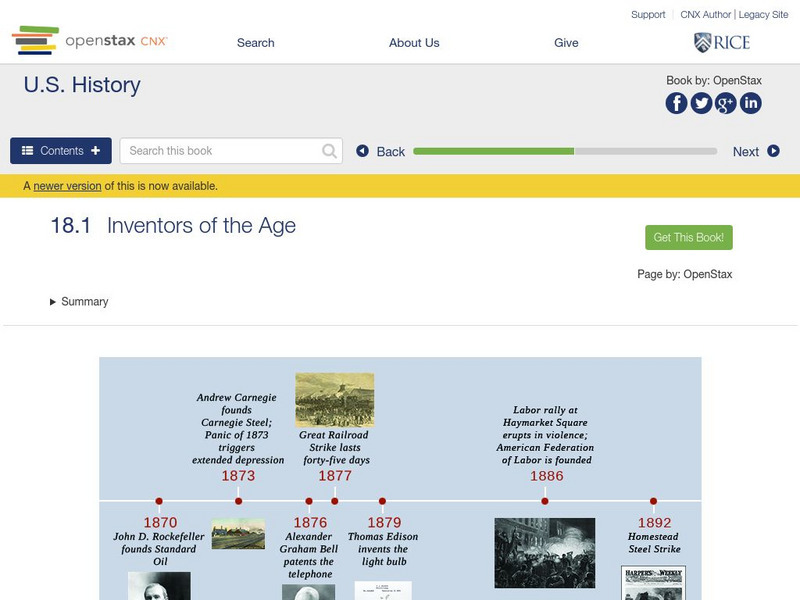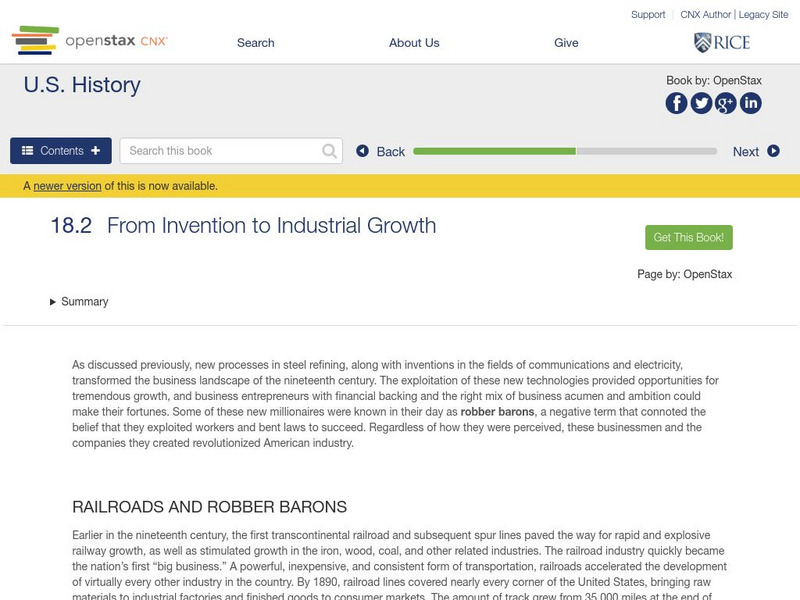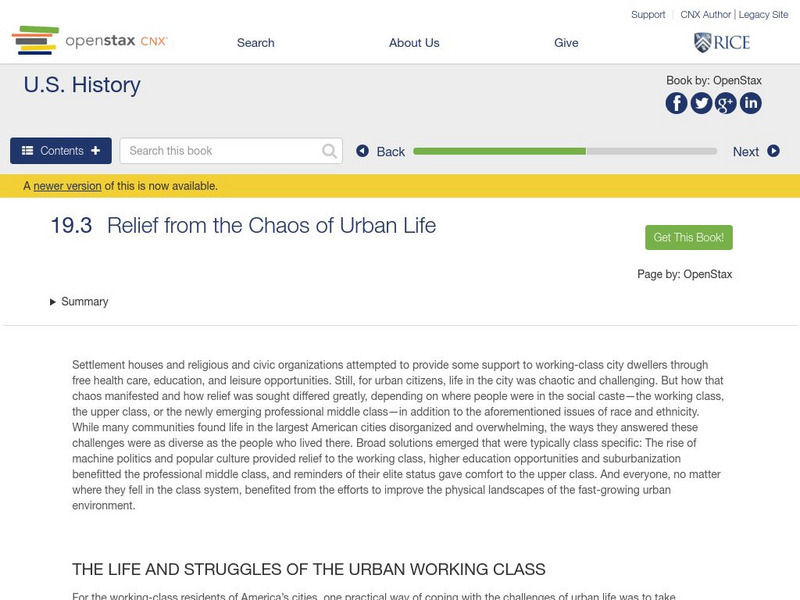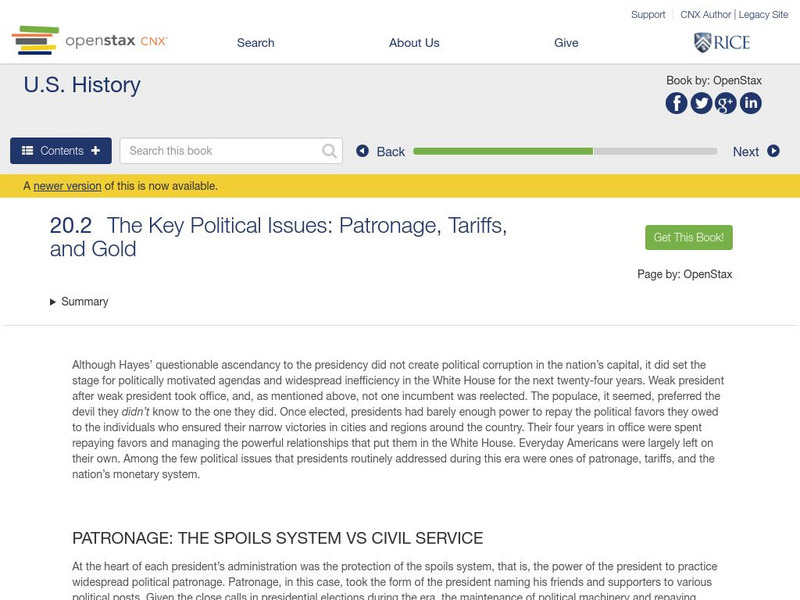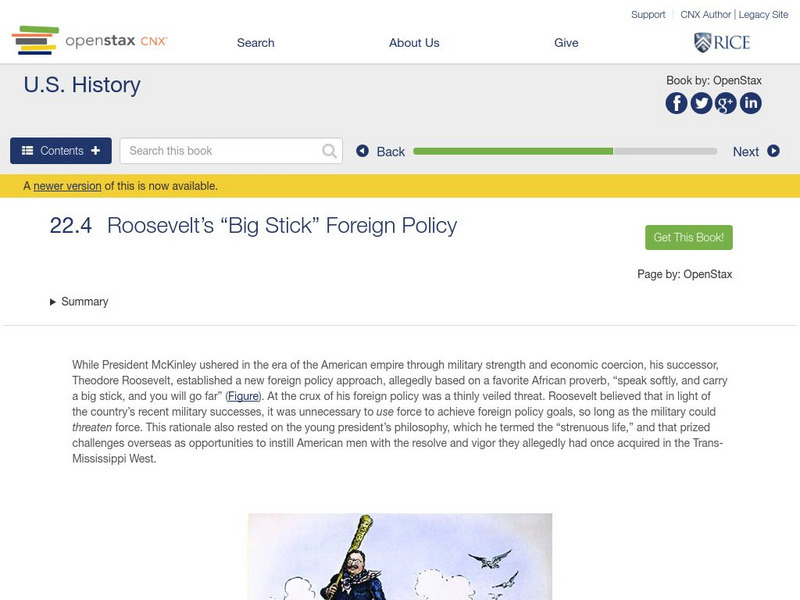National Institutes of Health
Paleoindian Large Mammal Hunters on the Plains of North America (1998)
Published journal article that details faunal studies, hunting, weaponry, hunting strategy, butchering, and ritual activities. Seven cultural complexes are considered: Clovis, Goshen, Folsom, Agate Basin, Hell Gap, Alberta, and Cody.
The World Bank
World Bank Group: Income Inequality
This website examines the topic of income inequality and compares Brazil and Hungary. Lorenz Curves and Gini coefficients are used in this analysis. Includes a few discussion prompts.
US National Archives
National Archives: Lesson Plans Congress, the President, and the War Powers
Examine the power of Congress to make war by studying primary source documents from various wars throughout U.S. history. Students will analyze how the balance of authority between the legislative branch and executive branch has changed...
University of Missouri
Famous Trials: The Nelson Mandela Trial
Nelson Mandela was willing to die for his belief in a free society where all people can live in harmony with equal opportunities. Instead, he spent eighteen years in jail. Read this in-depth summary of his trial. Included are...
University of California
The History Project: Ideas and Strategies of the Woman Suffrage Movement
Although the campaign for Woman Suffrage in the United States began with the Seneca Falls Convention of 1848, six decades later the leaders of the movement could claim victories in only four, sparsely-populated Western states, Colorado,...
University of North Carolina
Nc Civic Education Consortium: Joe Mc Carthy and the Red Scare
This very detailed lesson plan incorporates small group activities, whole group activities, projects, debate ideas, and primary sources all related to Joseph McCarthy. Extensive background material is provided along with a bibliography...
Mount Holyoke College
Mount Holyoke College: Early Cold War Era u.s. Foreign Policy
In his article entitled "Economic Interests, Party, and Ideology in Early Cold War Era U.S. Foreign Policy", Benjamin O. Fordham discusses the United States' foreign policy during the Cold War, focusing on the country's ideology, party...
Annenberg Foundation
Annenberg Learner: American Passages: Slavery and Freedom: Frederick Douglass
This concise biography presents author/journalist Frederick Douglass, who was groundbreaking in his slave narratives and establishing "The North Star" abolitionist periodical in mid-nineteenth-century America. See "Frederick Douglass...
US National Archives
National Archives: Confronting Work Place Discrimination on the Wwii Homefront
African Americans were not able to take advantage of the booming industries as Americans were mobilizing for WWII. The FEPC was established to make sure Roosevelt's executive order providing for equal opportunities in defense industries...
CPALMS
Florida State University Cpalms: Florida Students: Territorial Behaviors
In this tutorial, students learn about the history of American acquisition of new territories including those that became states and those in other parts of the world. America's involvement with the Panama Canal is also covered. A PDF...
OpenStax
Open Stax: Identity During the American Revolution
From a chapter on "America's War for Independence," this section of the chapter explains Loyalist and Patriot sentiments and identifies different groups that participated in the Revolutionary War.
OpenStax
Open Stax: John Brown and the Election of 1860
By reading this section from a chapter on " The Tumultuous 1850s," students will be able to describe John Brown's raid on Harpers Ferry and analyze the results of the election of 1860.
OpenStax
Open Stax: Making a Living in Gold and Cattle
In this section, students will learn about the major discoveries and developments in western gold, silver, and copper mining in the mid-nineteenth century. They will be able to explain why the cattle industry was paramount to the...
OpenStax
Open Stax: Industrialization and Big Business, 1870 1900: Inventors of the Age
In the Industrial Revolution, new products and inventions spurred the growth of big business. Learn about some of these inventions and the people who created them, for example, Alexander Graham Bell and Thomas Edison.
OpenStax
Open Stax: Industrialization 1870 1900: From Invention to Industrial Growth
This section of the textbook describes how new inventions spurred industrial growth in the 19th century and discusses the business methods and models of Andrew Carnegie, John Rockefeller, and J. P. Morgan.
OpenStax
Open Stax: Industrialization: Building Industrial America on the Backs of Labor
Learn about the lives of the working class in Industrial America, what led to the formation of labor unions, and why labor unions were not successful despite strike actions.
OpenStax
Open Stax: Industrialization 1870 1900: A New American Consumer Culture
Learn about the development of the consumer mindset at the end of the 19th century.
OpenStax
Open Stax: Growing Pains of Urbanization, 1870 1900: Challenges
Learn about some of the problems created by urbanization and some potential solutions to them.
OpenStax
Open Stax: Growing Pains of Urbanization: Relief From the Chaos of Urban Life
Learn how different economic classes in urban centers spent their leisure time in the late 19th century. Includes a good discussion of machine politics and the role it played in the lives of the lower classes, as well as its negative...
OpenStax
Open Stax: Gilded Age 1870 1900: Political Corruption in Postbellum America
Read about federal politics during the Gilded Age and why not much was accomplished during this time.
OpenStax
Open Stax: Gilded Age 1870 1900: Key Political Issues: Patronage, Tariffs, Gold
Political patronage was a big problem in the late 19th century and led to corruption within the government. This made it difficult to reform the civil service. Tariffs were another big issue and affected economic groups in different...
OpenStax
Open Stax: Foreign Policy 1890 1914: Spanish American War and Overseas Empire
Looks at the development and evolution of the Spanish-American War, at Americans' views on imperialism at the end of this war, and at the relationship of this war with America's other international interests.
OpenStax
Open Stax: Foreign Policy 1890 1914: Roosevelt's "Big Stick" Foreign Policy
The 'Big Stick' foreign policy of Theodore Roosevelt is explained, and how it was used in the building of the Panama Canal and to maneuver an end to the Russo-Japanese War.
OpenStax
Open Stax: Great War 1914 1919: American Isolationism and European Origins of War
The foreign policy of Woodrow Wilson is explained, and how he tried to keep America neutral at the start of World War I yet intervened in international affairs in the Western Hemisphere. The reasons America declared war on Germany in...





